Witch Archetype- the feared parts of the psyche.
The dark side of history: Great Mother/Mother archetype, Witch Hunts, and the Legacy of the outsider woman.
Hello, dear readers,
I was “burning” to write this article about the Witch Archetype.
The fire is high, the passion intense, I felt as if it had been lying dormant, waiting for this perfect season of quiet, rooting, and deep introspection—autumn moving into winter, to come out into the world.
I've structured this piece to cover what comes to mind and the key aspects I consider important regarding how the witch is interpreted now in our culture and the collective psyche.
I’ll explore the nuances and perspectives on the Witch archetype through historical-cultural, psychological, evolutionary, and especially mythological lenses.
I believe there is so much more to write about the magical, healing, and wise aspects of this archetype (and I will write again), yet for now I feel compelled to dive into how we perceive it and how our psyche engages with its content.
This perception of this archetype and all archetypes are shaped largely by our connection to nature, societal influences, intergenerational legacies, our darker aspects, projections, and the harm that arises when we fail to accept parts of ourselves and others.
"Wholeness is not achieved by cutting off a portion of one’s being, but by integration of the contraries." Carl Jung
Table of Contents:
‘Outsider’ women in mythology.
Christianity and the Witch Hunts.
The Witch Archetype Resurfacing in Humans Acting Like Gods .
– The Third Reich/ Communism and it’s legacy.
We keep realities in the dark.
Older women.
The true gifts of the Witch archetype.
I hope you enjoy reading this as much as I enjoyed writing it.
After years of reflection, it finally surfaced in just a few hours, like a spiral unfolding, in what the alchemists called the circumambulatio, walking in circles, reminding me that the time I spend on the spiral journey is not time wasted.
I’m also happy to announce that, starting this autumn, I have returned to working with plants not only as a Botanical Illustrator, but as a certified Master Herbalist.
I look forward to sharing more of this magical “witchy” side with you soon.
“One of the fundamental laws of natural development is that it moves in a spiral, and the true law of nature is always reached after the labyrinth has been traveled. Psychologically you develop in a spiral, you always come over the same point where you have been before, but it is never exactly the same, it is either above or below.”-Carl Jung

Nuances.
The Witch archetype- is part of The Great Mother archetype- the primordial feminine energy, representing the full spectrum of the feminine experience.The word witch comes from the Old English wicca (male) and wicce (female), meaning "a practitioner of magic."
These terms are derived from the Proto-Germanic wikkjaz, meaning "one who practices magic" or "necromancer," and are linked to the Proto-Indo-European root weg- or weik-, meaning "to bend, turn, or twist."
This root suggests that a witch was thought to "bend" or manipulate reality through magical or mystical means.
In the 14th century, the word evolved in Middle English to wicche, which later became the modern witch.
Over time, the gendered distinction between wicca (male) and wicce (female) faded, and witch became a term used for both men and women, though it was primarily applied to women during the witch hunts in medieval Europe.
Another Old English word for 'witch' was hægtes or hægtesse, became the modern English word "hag" and is linked to the word "hex". In most other Germanic languages, their word for 'witch' comes from the same root as these; for example German Hexe and Dutch heks.The word witch is particularly used for women.
A male practitioner of magic or witchcraft is more commonly called a 'wizard', or sometimes, 'warlock'.
In mythology, witches are often portrayed as figures who possess knowledge of magic, the supernatural, and the hidden forces of nature.
I will refer to the Great Mother archetype as the force that appears in myths, symbols, and deities, while also including references to the Mother archetype, which is more grounded in the psychological relationship with one's own mother or maternal caregiver.
In Greek mythology, figures like Hecate, the triple goddess of witchcraft, magic, and the moon, represent the powerful and mysterious nature of the witch.
Similarly, in Norse mythology, Heiðrún, a magical goat, was associated with mystical knowledge and transformation.The witch is often linked to border spaces—places between worlds, like crossroads or the forest—symbolizing their role as boundary-crossers, mediators between the human and the divine.
In many cultures, the witch archetype is both feared and adored for its ability to shape fate, wield power, use herbs, and connect with nature.
In the ancient world, most witches were doctors, healers, and communicators with nature and the divine. They were wise, and their wisdom was greatly appreciated.
Many served as midwives, leaders, warriors, or oracles. In the Celtic tradition, goddess like the Morrigan (Mór-ríoghan) were both warriors and witches.
In our modern culture, the witch archetype has resurfaced in two contrasting forms. One accepted version, is the image of the young, sexy, and rebellious witch, often depicted as over confident and alluring, embracing a 'bad' witty persona (mostly in tv shows), and the rejected version portrayed as old, isolated, and unattractive, mean embodying a contrast to the youthful and seductive version (literature and movies).
This duality reflects cultural tensions surrounding female power, age, and beauty. Those tensions hold the mirror of what we are not ready to accept, our limitations in terms of beauty and our mortality.Alongside the reclamation of women’s rejected traits—the 'good witch' archetype has also made a comeback, symbolizing wisdom, healing, and nurturing.
This resurgence highlights the witch as a symbol within feminist activism, reclaiming of marginalized feminine identities and human rights or creating safe spaces for women to heal and reconnect, like my friend is doing for mothers.
Archetype origin
An archetype is a repeating symbol in all cultures, over time, appearing in stories, images of art, in objects and that are part of our collective memory.
These symbols show up in mythology, folklore, history, and traditions, forming narratives that vary in cultures but often share similar symbols and themes.
The Witch is one of many faces of the Great Mother archetype, alongside the Mother, the Maiden, the Mistress, and the Priestess.
The Great Mother archetype is the primordial feminine energy, representing the full spectrum of the feminine experience.
This Witch archetype is often seen as an "outsider", wielding knowledge, independence, and power that society may not readily accept.
The Witch overlaps with the darker side of the Mother, the repressed maternal feminine energy or wisdom that the uncounscious collective (and the infant) fears and does not understand.
To truly engage with an archetype is not to embody it, but to learn from it and play with it, enriching your connection to nature, spirituality, and the mystical or hidden parts of consciousness. This requires a deep understanding of the archetype’s historical, psychological, and symbolic layers, as well as self-awareness and clarity of intention.
Without the depth, the archetype and any archetype can be distorted, misinterpreted, or even weaponised in ways that undermine its true essence and purpose.
“On a primitive level, people are afraid of witches; on the modern level, we are apprehensively afraid of microbes.”-Carl Jung
‘Outsider’ women in mythology and the repression of feminine energy.
In mythology wiches are mostly complex figures that developed symbols of marginalized power often marked by fear and suspicion.
This evolution and stories are seen through figures like Circe and Medeea from Greek mythology, Hecate, Lilith from Jewish folklore, and Heka from Egyptian belief systems, old witches in european folklore like Baba Yaga or Cailleach in Gaelic mythology, the list is long but what they all have in common is the embodying themes of magical knowledge, defiance, and supernatural power, while also illustrating society's shifting political and cultural views on female independence, mystery, and danger.
We can better understand how the witch archetype has been shaped in our psyche by the historical tensions around gender, power, and social control.
The Furies
In Greek mythology, the Furies (Erinyes) are vengeful goddesses who punish wrongdoers, particularly those who murder or betray family members. They are frequently portrait as terrifying women with snakes for hair, and they are notorious for driving their victims insane.
In the Oresteria, the Furies relentlessly pursue Orestes after he murders his mother, Clytemnestra, to avenge his father's death. Orestes is tormented by guilt, and the Furies pursue justice.
Athena steps in by organising a trial for Orestes, and she casts the deciding vote in his favour, acquitting him.
As a result, the Furies are transformed from vengeful spirits to the Eumenides ("the Kindly Ones"), who are no longer agents of wrath but rather guardians of justice, representing the transition from “retribution” to “civilized justice”.
They are send in the caves, are giving a place where they can serve and be called when needed.
This mythological story is about the rejected dark feminine side of the Mother archetype, because most of the times women’s anger is forbidden, the “retribution” is hard to handle and it need to be “civilezed” in order to be integrated by the collective and in the human psyche, therefore buried deep into the collective unconscious.
These aspects of the dark side of the Mother/Great Mother are forced to go underground by a society that denies women's anger, agency, and power, associating them with “witchiness.”
The Great Mother includes dualities: she is nurturing yet dangerous, benevolent yet ruthless. In psychological terms, she represents not just the nurturing aspects of motherhood but also the darker, more complex aspects of existence, like dependency, domination, and the capacity to both sustain and dissolve life.
The Great Mother is a universal symbol of the life-giving and life-destroying aspects of nature and existence whereas the Mother archetype is generally understood in terms of more directly nurturing and protective aspects.
The Great Mother appears as a force in myths, symbols, and deities, while the Mother archetype is more grounded in the psychological relationship with one's own mother or maternal caregiver.
When the collective struggles to contain unpleasant emotions or reactions, often labeled as the 'darker' side of feminine nature, these traits find expression in collective symbols, like the Witch.
The 'infuriating power' attributed to women makes it difficult for them to be accepted in a society that predominantly values 'good' and 'pure' behaviors. We don’t like angry women.
Yet, historically, it was not female anger or power that led to wars; rather, these wars were often initiated and led by men, reshaping societies and significantly impacting women's autonomy and freedom.
When a mother figure says “no” or displays anger, the overwhelming power of the maternal archetype can create an internal split in the infant, forcing the child to navigate a divide between the “good” and “bad” aspects of nurturing.
The Dual Nature of the Maternal Archetype:
“The mother is both a creator and destroyer, and when this duality is not integrated within the psyche, it can lead to an emotional conflict that resonates through life, resulting in either an exaggerated attachment or rejection of maternal figures in adulthood.” Marie-Louise von Franz(The Psychology of the Feminine).
This same archetypal split can also be found in the collective consciousness and in the context of Christianity- “Virgin Mary”- the pure- the unpure women “whores”.
Due to the fear of the powerful feminine, the witch archetype is projected onto biological women.
Being born a woman means inheriting transgenerational stories, and you are shaped by societal molds filled with one-sided moral conduits that dictate from the moment you are born what it means to be, behave, and act.
In many societies, women are not allowed to act or live the same way as men; they are denied sexual and financial freedom, the liberty to speak up, or to be carefree.
When they do exercise these freedoms, they are often seen as 'special’-’outsiders’. Women are frequently imbued with a destructive potency that society (both men and women) may fear.
In the context of Christianity
Carl Jung and Marie-Louise von Franz noticed a connection between the way society idealized figures like the Virgin Mary and the darker side that emerged in the witch hunts and trials.
Malleus Maleficarum (1487), also known as the "Hammer of Witches":
“All witchcraft comes from carnal lust, which is in women insatiable.”
“In total, it’s estimated that the witch-hunt frenzy, which took off in the late 15th century and lasted for 300 years (the last known official witch trial took place in my homeland, Poland, in 1783), led to the prosecution of roughly 90,000 people, with nearly 45,000 executions. The vast majority of those accused and sentenced to death were women — particularly those who had attained a certain degree of power or popularity in their communities, elderly women, widows, poor women, and those deemed of ‘ill repute,’ such as women who had children out of wedlock or were believed to engage in ‘lewd’ and ‘promiscuous’ behaviour.”
Katie Jgln (please read her article-it is very, very good)
The feminine ideal—virginal, chaste, and spiritually pure with focus on purity created a sharp divide, rejecting the more earthy, sexual, and primal aspects of being a woman, a human.
Puritan: a person with censorious moral beliefs, especially about self-indulgence and sex. noun: puritan; plural noun: puritans "my mother was a puritan about sex".
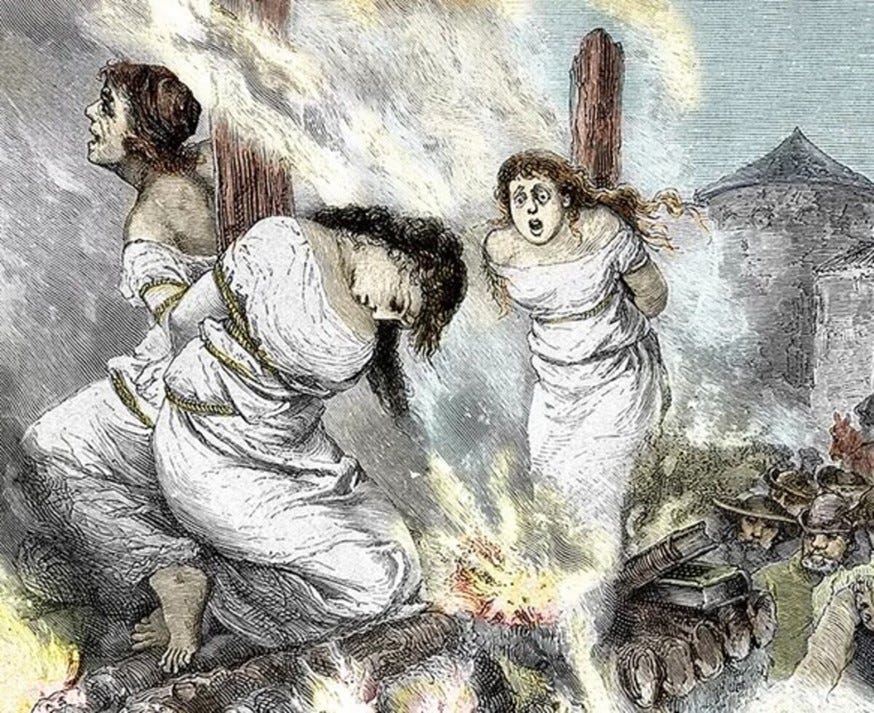
This division between the "good" and the "bad" side of femininity also ties into Freud's idea of the Madonna-Whore Complex I’ve already wrote about here.
Sigmund Freud suggested that men often view women in one of two categories:
the pure, virtuous “Madonna” or the sinful, sexual “whore.”
Carl Jung and Marie von Franz took this idea further, saying that this split limits how we understand women and forces society to reject certain parts of the feminine.
As a result, the "earthy, primal, wild" side of femininity—things like sexuality, power, and connection to nature—was pushed out of sight.
It was repressed into the unconscious mind. In Jungian psychology, this kind of repression creates what’s called the Shadow, which is made up of all the parts of ourselves that we try to ignore or deny.
Understanding the nuances of a situation and seeing the full spectrum of an action or behavior requires intention and a willingness to understand and gain clarity. This is why it is often easier to simply label things.
For women, their sexuality, autonomy, and power were often pushed into this shadow, creating fear around these qualities and mostly visible in the witch trials, like the Salem witch trials in the 1600s.
“The Salem witch trials were a series of hearings and prosecutions of people accused of witchcraft in colonial Massachusetts between February 1692 and May 1693. More than 200 people were accused. Thirty people were found guilty, nineteen of whom were executed by hanging (fourteen women and five men).”
Women who were seen as “working with magic”, "too strong," "too independent," or "too connected to nature" were often accused of being witches.
In this mind blowing study Ideational diffusion and the great witch hunt in Central Europe, it is very well expose that the climate pressures, instability in politics, weak executive control over the judiciary, and religious conflicts all contributed to mediaeval Europe's great witch hunt.
The invention of printing, around 1450, allowed the spread of a new ideology that redefined witchcraft as harmful magic practiced by those in league with the devil. Print did not create this new understanding, but it did allow the theory to escape within the walls of the clerical elite, contributing to the repeated waves of persecution that defined the Great Witch Hunt.
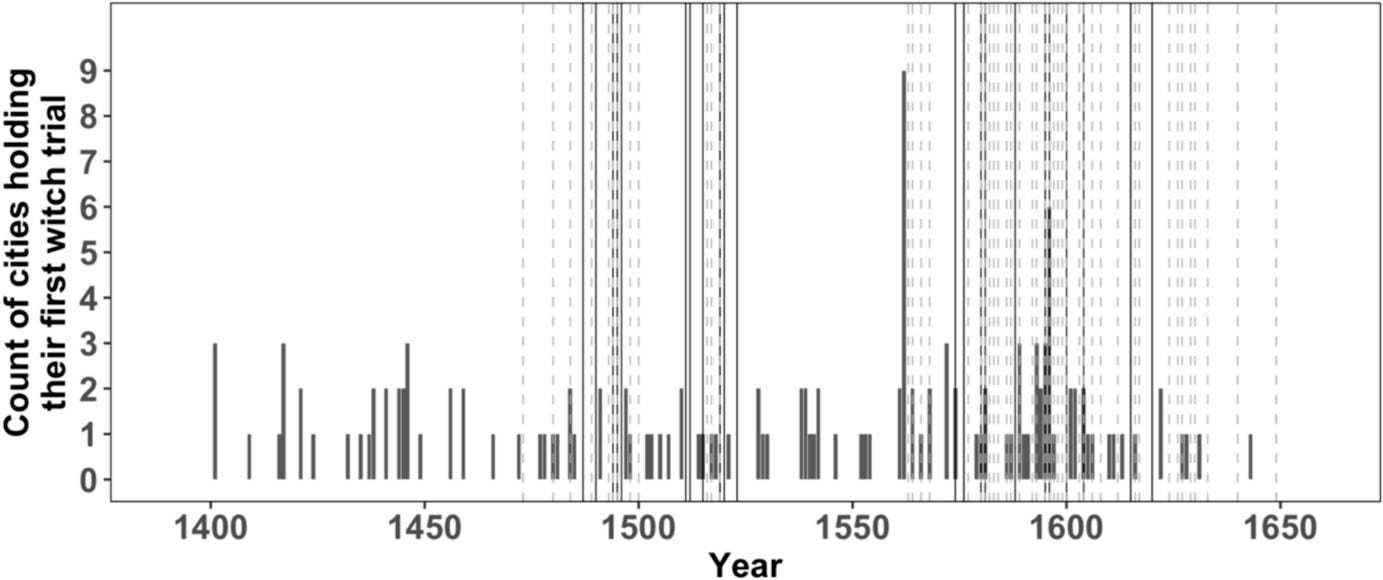
These women were feared not only for defying social norms but for embodying the aspects of femininity that society had repressed—sexuality, independence, and power.
The witch became a scapegoat for society’s anxieties about women’s repressed qualities, and these fears often turned into violence and persecution.
Witch Archetype Resurface in Humans Acting Like Gods-hyper-masculine, authoritarian ideal-Third Reich.
"Whatever is rejected from the self, appears in the world as an event." Carl Jung
When there is no balance between men and women in expressing themselves and having agency, when one side becomes more predominant, powerful, or overwhelming, it can create the dark archetype of the witch—akin to the 'Übermensch'(superman)—not in Nietzsche's original sense, but rather in the distorted, dilusional form adopted by Hitler's ideology.
As with all figures who seek power solely for themselves, this imbalance can lead to violence and harm, both individually and collectively.
We need to consciously integrate these energies into our psyche to avoid them surfacing in destructive ways, as they did in the dormant, latent creation of the "superior super-god" that manifested as the Third Reich.
When these powerful, repressed energies remain unacknowledged, they can take control of society.
The rejection of the feminine, along with the glorification of a hyper-masculine, authoritarian ideal, created an imbalance that fueled violence, hatred, and an unhealthy, exaggerated sense of superiority.
Under the totalitarian ideology of communism (the system I was born into and lived through in my early childhood), there was a theoretical desire for egalitarianism. Women were "granted rights to work" and "participate" in public life, but these rights were shaped by the state's needs.
The focus was on being productive and maximizing the workforce to strengthen the state's power and competitiveness among other nations. It was never about individual autonomy, but about consolidating power, driven by the egocentric attitudes of dictators.
People’s productivity was enforced through fear, with punishments and retribution for any revolt—rebellion was simply not allowed.
Constant control over individuals, no matter the ideology, never works and never will.
Women were expected to fulfill roles that benefited the state—such as workers, mothers, and caregivers—which limited their personal freedom. Although the state granted a certain level of 'autonomy', women's reproductive rights were tightly controlled, especially with fluctuating abortion laws.
In response, many women turned to midwives or underground healers, some of whom were linked to the witch archetype.
These women used their knowledge of herbs and alternative medicine to perform abortions outside of official channels.
Most of them died in prisons for performing abortions for those in need.
Many women tragically died during these unsafe procedures or were left traumatized by the constant fear and sense of danger, often without support or protection. They lived their lives in silence, secrets, and pain, and for many, their stories remain untold.
Thus, while communism promised "empowerment," it inflicted deep collective trauma that will persist for many generations.
I am one of the women who must carry and untangle the legacy of the experiences imposed on my mother and her mother—women who were stripped of their identity, protection, autonomy, and the right to control their own lives.
Women like me are tasked with cleaning up and rebuilding our own path to womanhood, making sense of the trauma left behind, and, in this time, creating lives of our own. This requires a lot of "witch" shadow and light work.
If this autonomy is continuously suppressed, it doesn't disappear. Our need for freedom will always find ways to manifest—it festers in the unconscious and can surface in toxic or destructive forms.
“As demonstrated by, for instance, historian Carolyn Merchant and journalists Barbara Ehrenreich and Deirdre English, the witch hunts forced women to abandon the vast body of knowledge that generations of women before them had acquired — knowledge of nature, medicine, spirituality and, perhaps most crucially, the female body.
This, unfortunately, is what propaganda does. It suppresses the ‘old’ to make way for the ‘new’, which, in this case, was the suppression of female social power, knowledge and cultural practices in favour of full submission to male and institutional control, particularly within the nuclear family.”- Katie Jgln
(How the Printing Press Ignited Europe’s Deadly Witch-Hunt Frenzy)
Throughout history, oppressive governments have controlled artists, writers, and other creative figures who evoke the soul’s chaotic, unsettling forces in this way, artist are a representation of the Witch archetype.
Dream interpretation, once a forbidden art, was associated with witches because it required going into the darkness of the unconscious, a space filled with unsettling and powerful insights.
Symbols of the witch, such as the night, the moon, and storm spirits, evoke the mystery of the unconscious, we fear our primal instinct and the realm that stirs both fear and fascination.
In many ways, if you look at the history of the witch archetype, you can see a synchronicity with the detachment from nature.
The witch hunts began during the period of industrialization, alongside the radicalization of native and indigenous cultures that were closely connected to nature for survival.
This period marked the rise of colonialism and the chemicals invented to replace what nature provided.
The witch, in this context, represented a danger to the economy and industrialization, as society needed people to disconnect from nature and focus on consumerism. There is no financial gain if people are aware of their true power.
Today, the impulse may be to retreat into rationality, law, and order.
But the “dark”, our primal fears remains in the shadow of our collective, even as we try to deny it.
We keep realities in the dark.
The “outsider” older women.
Climate change and other global challenges reflect forces beyond complete human control, yet society often clings to a false sense of safety, keeping these realities in the dark.
Older women represent a reality that society often struggles to confront.
We tend to push them to the margins, neglecting to celebrate or support them, as if fearing the inevitability of aging. This fear often leads us to suppress or stigmatize anything associated with growing older, especially when it comes to women.
However, women’s lives typically extend long after menopause—an average of 35 years or more—during which they hold a wealth of lived experience and potential. Humans are one of only three species that live and thrive after their reproductive cycle is over.
There is a reason we continue to live and enjoy life beyond our fertility years. Evolutionary theories, such as the “grandmother hypothesis,” highlight the vital role of elder women in society.
Because we live a long time after menopause, we accumulate knowledge and wisdom that can be passed down to younger generations.
The witch archetype is often portrayed as a "hag" or "crone," depending on how society and culture view aging and the elderly.
The term "hag" can be used more pejoratively to insult or belittle a woman as she ages, implying that her worth or value decreases as she grows older.
Traditionally, the term hag refers to an old woman, often one who is depicted as unattractive, with negative qualities such as being wicked, malicious, or mean-spirited, a witch.
Historically, a ‘crone’ was an old woman who was seen as wise and knowledgeable, especially in spiritual or herbal traditions. In many cultures, crones were revered as the keepers of wisdom, experienced in life and often associated with the cycles of nature, healing, and the seasons.
Crone as embodying a stage of life where women embrace their full potential, unencumbered by societal expectations of youth and beauty.
“The crone is not just the grandmother, the wise woman or healer.
She is the fierce old woman who carries the dark knowledge of life and death, of transformation and power.” — Jean Shinoda Bolen, The Circle of Women
Society is obsessed with a "frozen-in-time" youthful appearance, shaping our self-care choices and pressuring us to alter our faces and bodies to fit an ideal of perpetual youth—all in the name of “beauty.”
If we truly want to integrate the wise feminine into the collective, we need to make space for older women in our lives, not isolate them.
First, we must allow ourselves to move through menopause and out, embrace the “crone” energy, rather than deny it.
We need to be willing to undergo real transformation—both inwardly and outwardly—so that our voices can be heard, we can gain clarity, live with intention, and let the witch archetype live among us and guide us.
This energy shouldn’t explode sporadically or leak out in distorted and misunderstood ways.
The meticulous process of gathering energy and focus is the true gift of the Witch archetype.
The Witch is closely aligned with nature, with the cycles of life, death, and rebirth. Just as the Earth undergoes constant change, so too can we observe the cycles within our own lives and psyches. We live in seasons.
The Witch teaches us to attune ourselves to natural rhythms—our bodies, our inner world—whether through the seasons, the phases of the moon, or our own internal cycles, helping us align our consciousness with the larger cosmic flow.
The wisdom of the Witch archetype lies in its ability to confront our shadows and integrate both the light and dark aspects of ourselves.
Dreamwork is one way to explore our "night" life, where the rational ego is less dominant, offering new perspectives on the intuitive, magical realms that await us to decode and give our attention to.
The Witch is an powerful archetype that invites us to integrate all parts of who we are—light and shadow.
As part of the Great Mother, both cosmic and earthly, she helps us gain a bigger picture of our life, our mortality, and our magic, showing us how to live with intention and clarity.
She activates the rejected and hidden aspects of our nature—the parts we fear, deny, or cannot tolerate—inviting us to reconsider these darker aspects in order to ‘individuate,’ heal, and create room for psychological growth through profound wisdom.
When we are truly willing to see ourselves fully, we can also see others for who they are—the good and the bad. This reflects our humanity and potential, not our weakness.
“This is also why being called a witch and calling oneself a witch are usually two vastly different experiences. In the first case, it’s often an act of degradation, an attack against a perceived threat.
The second is an act of reclamation, an expression of autonomy and pride. Both of these aspects of the archetype are important to keep in mind. They may seem like contradictions, but there is much to glean from their interplay.
The witch is the ultimate feminist icon because she is a fully rounded symbol of female oppression and liberation. She shows us how to tap into our own might and magic, despite the many who try to strip us of our power.
We need her now more than ever.”- Time
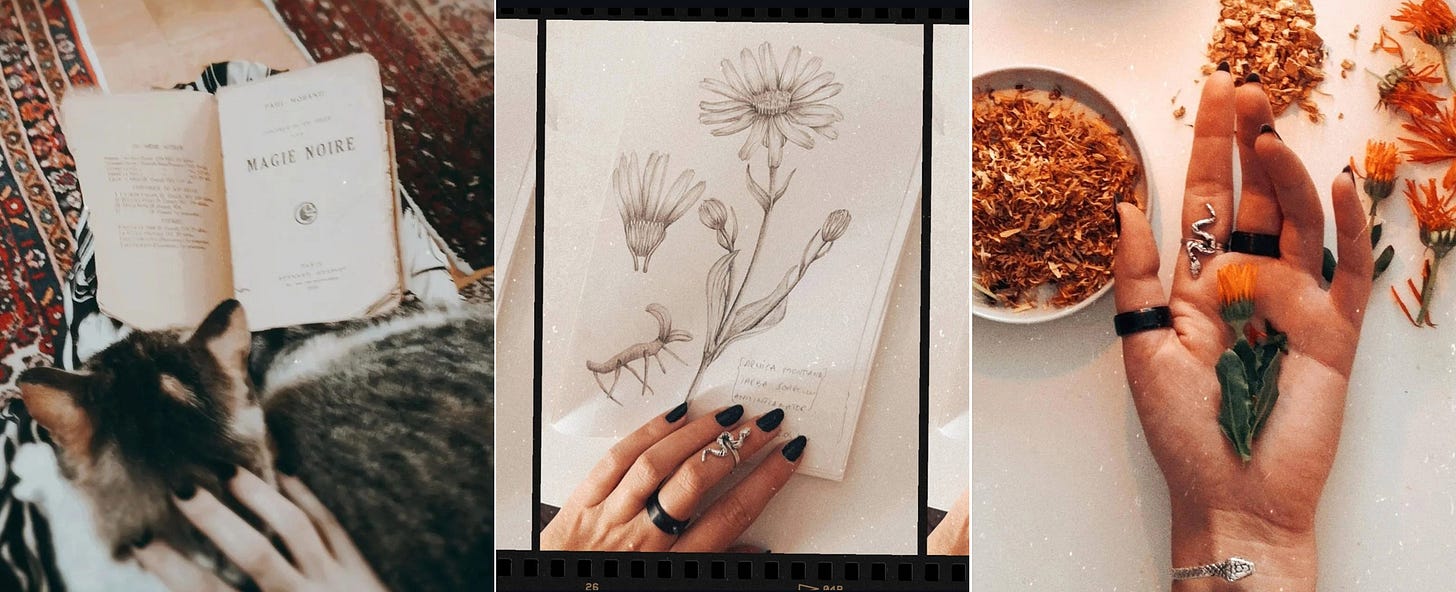
You can support my work simply by being here.
But if you’d like to contribute more, consider becoming a paid subscriber for $8 a month—about the cost of a cup of coffee, which I’ll gladly sip while creating, reading, and writing with love for knowledge and deep respect for our human nature.Thank you—whoever you are.
Ripples always travel farther than we know… or sometimes, they bring things closer.
I'm here to write and share. You’re welcome to read with no expectations.
References:
In depth study:
Theory and Society- Ideational diffusion and the great witch hunt in Central Europe
Books:
The Feminine in Fairy Tales Marie-Luise von Franz
Aspects of the Feminine Carl Jung
Inspirational Jungian Podcast:
THE ARCHETYPE OF THE WITCH: Dangerous, Denied & Dishonored
https://thisjungianlife.com/

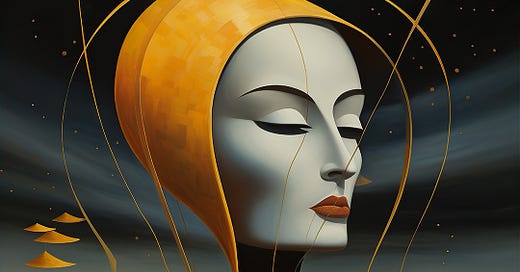


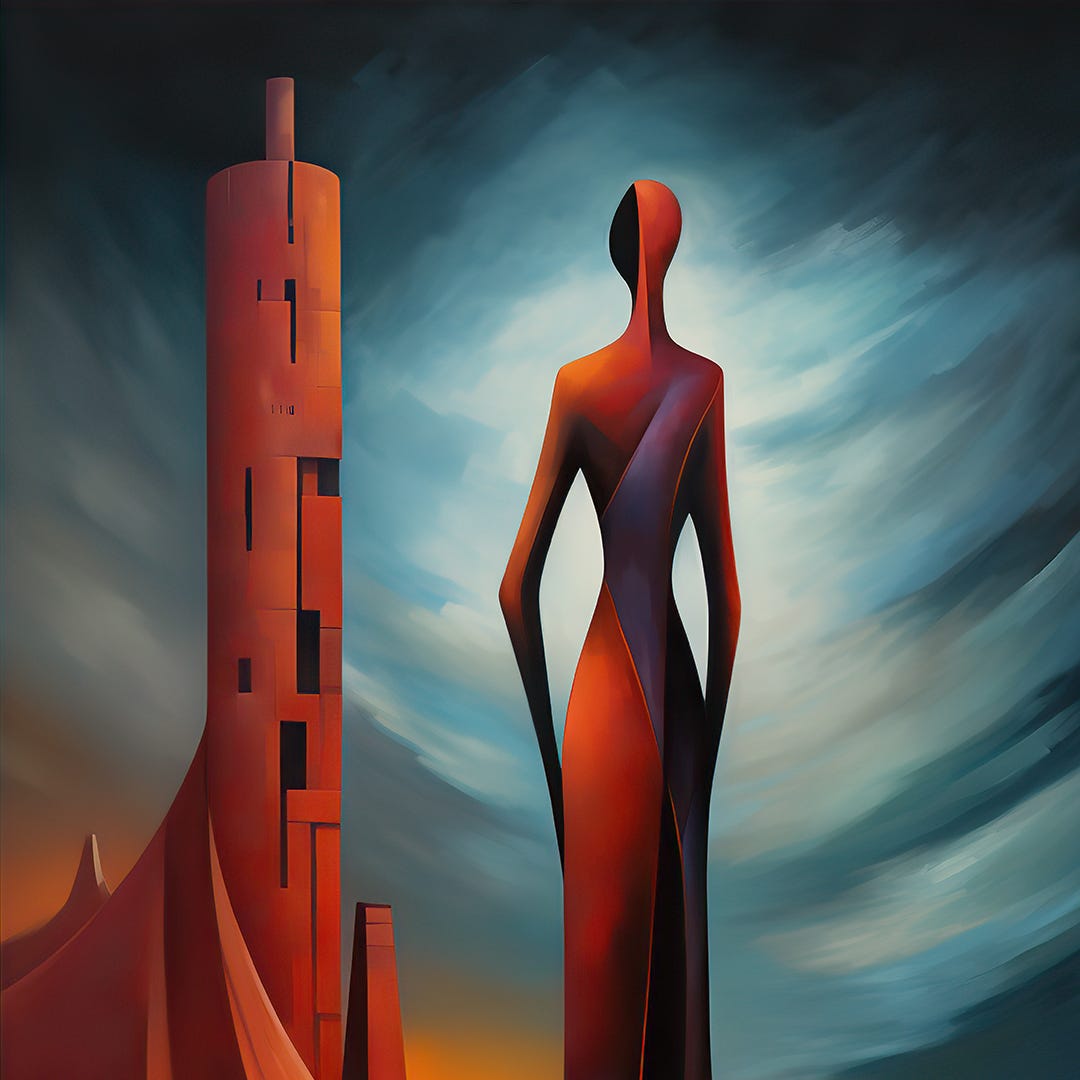
Deep bow for the work you are doing, and the wisdom you embody.
You know what I’m thinking right now, your article Katerina would make for an enlightening documentary!